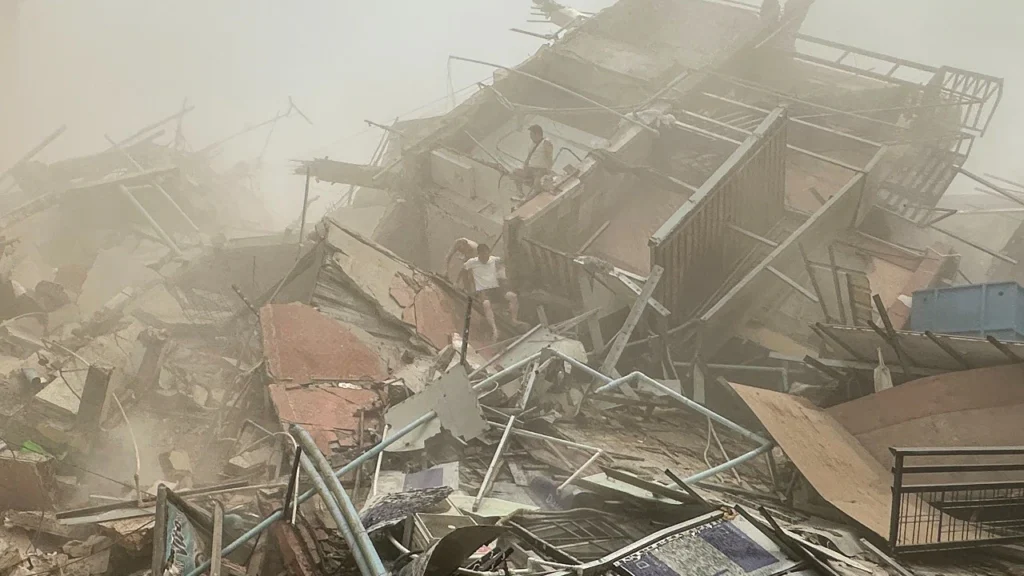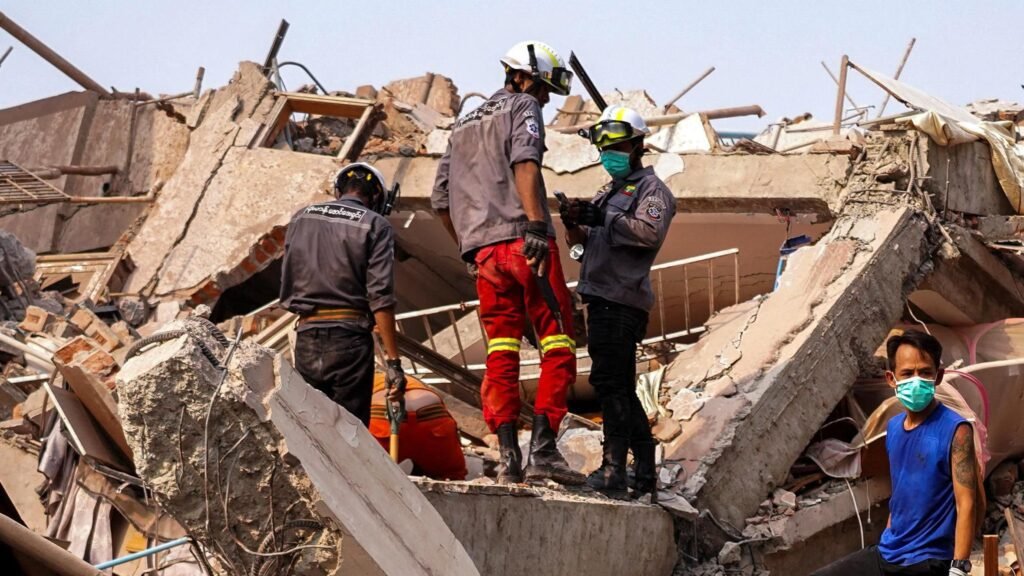A powerful earthquake struck Myanmar recently, shaking cities, damaging buildings, and leaving thousands in fear. The quake, measuring around 6.5 on the Richter scale, hit central Myanmar, causing tremors to be felt in neighboring countries like Thailand, India, and Bangladesh. The impact has led to panic among residents, as rescue teams rush to help those affected. Experts fear the disaster could have long-term consequences for the region, both in terms of human suffering and economic damage.
The Earthquake’s Impact
The earthquake struck in the early morning hours, catching many people off guard. Reports indicate that buildings collapsed, roads cracked, and power outages occurred in several areas. Social media flooded with videos of people running for safety as homes and offices shook violently. Residents shared horrifying stories of how they woke up to shaking walls, falling objects, and the terrifying sounds of destruction. Many people barely managed to escape as their homes crumbled.
Authorities have confirmed multiple injuries, with some casualties reported. Hospitals are currently treating the wounded, while emergency response teams are working tirelessly to reach people trapped under rubble. The number of affected people is expected to rise as more information comes in. Search-and-rescue teams are using specialized equipment, such as sniffer dogs and heat sensors, to locate survivors in collapsed structures. Unfortunately, the extent of the destruction means that some areas remain difficult to access, delaying rescue efforts.

Widespread Panic and Fear

Residents described the terrifying moments when the earthquake struck. Many rushed out of their homes in fear of buildings collapsing. “It felt like the whole house was moving. We had to run outside immediately,” said one survivor in Mandalay. Others reported feeling dizzy as the ground shook beneath them, leaving them disoriented and unable to react immediately.
The tremors were strong enough to be felt in neighboring regions, prompting fears of aftershocks. The government has advised citizens to stay cautious and be prepared for possible further quakes. Experts warn that aftershocks, sometimes nearly as powerful as the initial earthquake, could continue for days or even weeks. The uncertainty has left many people sleeping outdoors, fearing that their damaged homes could collapse if another tremor strikes.

Rescue Operations Underway
Rescue teams, including firefighters, army personnel, and volunteers, are on the ground, searching for survivors. Emergency aid, including food, water, and medical supplies, is being sent to affected areas. The government has set up relief centers to assist those who have lost their homes. Many families are in desperate need of assistance, as they were forced to flee with only the clothes on their backs. Relief workers are working around the clock to provide necessities and emotional support to those traumatized by the disaster.
International organizations have also expressed concern and are offering assistance. Neighboring countries have extended their support, providing aid and rescue experts to help Myanmar deal with the disaster. Global relief agencies, including the Red Cross and United Nations humanitarian teams, are coordinating efforts to send supplies and medical personnel. The international response highlights the severity of the crisis and the urgent need for coordinated efforts to assist Myanmar in recovering from this catastrophe.
Historical Context
Myanmar has experienced several strong earthquakes in the past due to its location on a major fault line. The country has struggled with earthquake preparedness, making disasters like this even more devastating. Experts have been urging stronger building regulations and better disaster management strategies to reduce the impact of future quakes. Unfortunately, many of Myanmar’s older buildings were not constructed to withstand such powerful tremors, leading to severe damage and loss of life.
In previous earthquakes, Myanmar has suffered significant casualties and infrastructure damage, but this latest disaster has reignited discussions about the need for better construction standards. Some experts believe that had stricter building codes been in place, the extent of the destruction could have been minimized. The government is now under pressure to implement stronger regulations to ensure that future buildings can withstand seismic activity.
Economic and Social Consequences
Beyond the immediate destruction, the earthquake is expected to have long-term economic and social impacts. Businesses in affected areas have been forced to shut down, and many people have lost their homes and sources of income. Schools, hospitals, and places of worship have also suffered damage, making it harder for communities to resume normal life. Authorities are working to assess the total economic loss, which is likely to run into millions of dollars.
The disaster has also put a strain on Myanmar’s healthcare system, which is struggling to cope with the influx of injured patients. Hospitals in heavily affected regions are overcrowded, with limited medical supplies. Humanitarian organizations are stepping in to provide additional support, but more assistance is needed to ensure that all victims receive proper medical care.
What’s Next?
As aftershocks continue, authorities are warning people to stay alert. Engineers are inspecting buildings to determine if they are safe, and many schools and offices remain closed. Officials are also working to restore electricity and water supplies in affected areas. Meanwhile, psychologists and trauma counselors are being deployed to help survivors cope with the emotional toll of the disaster. Many victims, especially children, are experiencing severe anxiety and fear following the earthquake.
The earthquake has once again highlighted the need for better disaster preparedness in Myanmar. While rescue efforts continue, the focus will soon shift to rebuilding and helping communities recover from this devastating event. The government, along with international partners, is expected to launch large-scale reconstruction projects to restore critical infrastructure and provide permanent housing solutions for those displaced.
In the coming weeks, experts will analyze the earthquake’s impact and propose measures to prevent future disasters. While Myanmar mourns its losses, the resilience of its people and the global outpouring of support offer hope for recovery and rebuilding. The road ahead will be challenging, but with coordinated efforts, Myanmar can emerge stronger from this tragedy.
Also read: Studio Ghibli Meets UAE: Enchanting Visions of a Magical Emirates














